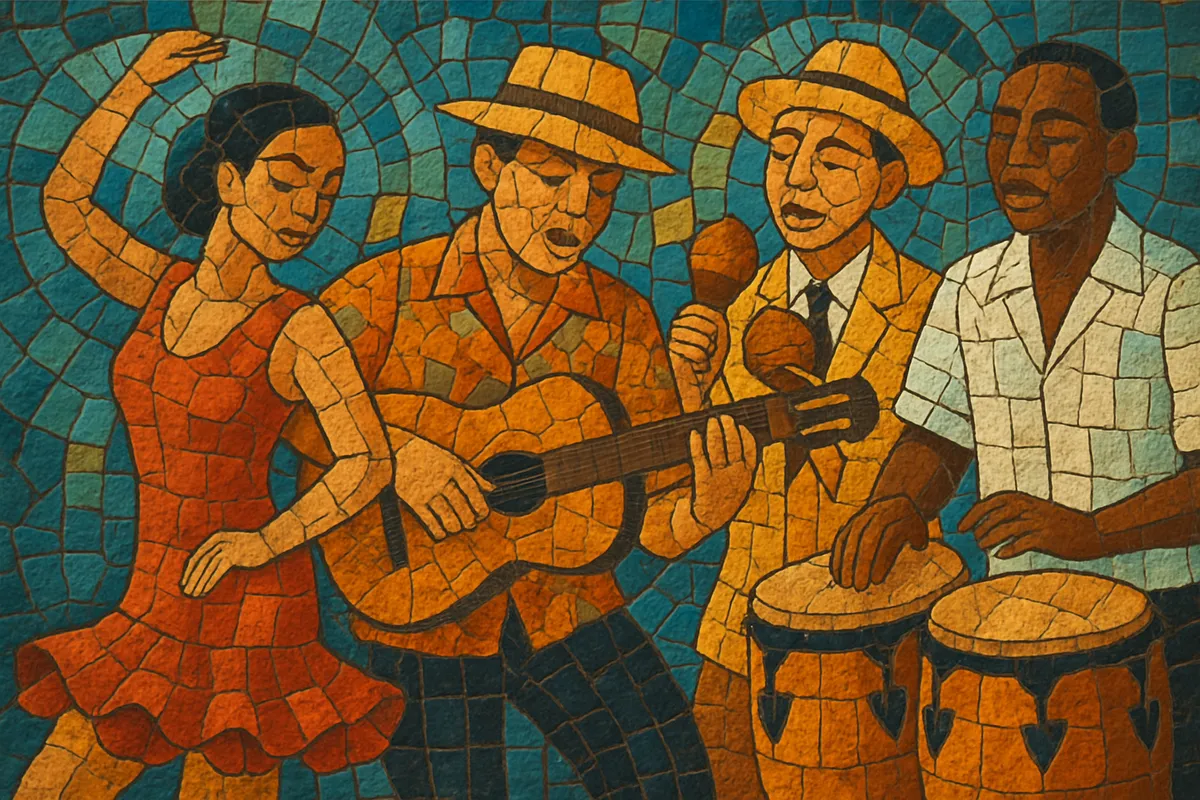Chachachá is a Cuban dance‑music genre that emerged in early‑1950s Havana as a dancer‑friendly offshoot of danzón‑mambo. It is typically performed by charanga ensembles—flute and violins over piano, bass, güiro, and timbales—producing a light, elegant sonority distinct from the brass‑heavy mambo big bands.
The groove is mid‑tempo with a clear, even pulse that supports the signature “cha‑cha‑chá” triple step heard in the dancers’ feet. Melodies are tuneful and diatonic, harmonies favor simple I–IV–V movements with occasional II–V turnarounds, and arrangements move from a lyrical cuerpo to a montuno section featuring coro‑pregón call‑and‑response, piano tumbao, and tasteful flute improvisations.
The name “chachachá” is often traced to the shuffling sound of the dancers’ steps; composer‑violinist Enrique Jorrín simplified mambo syncopations to make the beat more square and intelligible, which helped the style spread worldwide through social and ballroom dance.
Enrique Jorrín, a violinist and composer with Orquesta América in Havana, developed chachachá by simplifying the highly syncopated danzón‑mambo. His aim was to emphasize clear downbeats so dancers could easily hear the steps. Early hits such as “La Engañadora” (1953) and “Silver Star” established the model: charanga instrumentation (flute, violins, piano, bass, güiro, timbales), lyrical melodies, and a steady, moderate tempo that matched the new “cha‑cha‑chá” step.
Cuban charangas quickly adopted the style—especially Orquesta Aragón, Fajardo y sus Estrellas, and Orquesta Sensación—refining its elegant, light texture with virtuosic flute leads and tight violin harmonies. The genre spread to Mexico, the United States, and Europe, where ballroom studios codified the cha‑cha step and big bands (e.g., Tito Puente and Tito Rodríguez) recorded cha‑cha‑chá arrangements. Crossover hits like “Tea for Two Cha Cha” helped cement the craze.
In the early 1960s, a charanga boom in New York blended Cuban charanga traditions with Nuyorican scenes, feeding into pachanga and the foundations of salsa. While salsa became the dominant pan‑Latin dance music, the cha‑cha‑chá rhythm remained a staple groove within salsa bands, Latin jazz, and ballroom contexts. Traditional Cuban charangas continue to perform classic and new chachachás, and the style endures as both a social dance and a repertoire standard.


